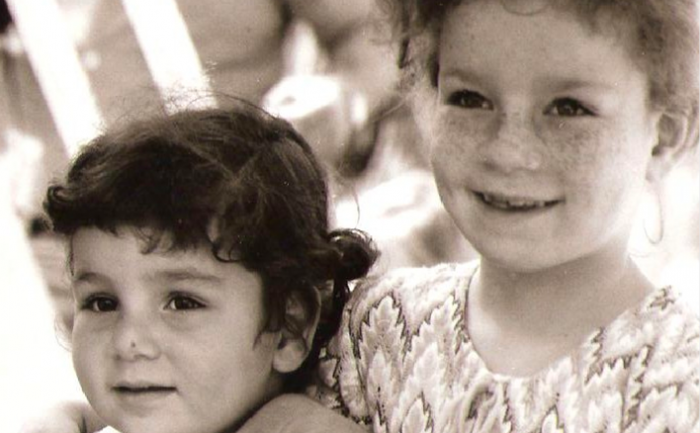Ten years ago, after having my first trauma session with Shai Tubali, my teacher and the developer of the Expansion Method (formerly known as the White Light), I was shocked and overwhelmed.
We can never know how much damage a single event can create in one’s psyche, and I was unaware of the influences and effects it had on me before the session.
The traumatic event registered in me as a very painful moment, one I knew must have reshaped the way I saw things (especially relationships), but I didn’t have the slightest clue how wide and deep it went. The trauma originated from my childhood.
Often, we do not call certain events trauma because traumas are only those big or serious events like war, rape, physical violence, accident, or sudden death of a loved one.
But, truly, most of our traumatic events are much less dramatic and colorful. It could be something, almost trivial, that other people may not consider trauma. Still, for you, it was a devastating moment, one that imprinted itself in your system and created chaos.
Our self-perception and many of our behavioral patterns are partly the unconscious outcomes of such moments. Unless we go through such a memory with very clear awareness and clear these imprints away, we remain with unresolved pain and be prisoners of our past.
For example, one of my clients worked on a moment from her childhood. She came home from school, proud and excited after receiving a good mark on a test, and wanted to share her joy with her mother. Her mother did not react and asked if someone else had done better than her on the test. This moment was a tiny moment in time, but the imprints and scars it had left on my client were many.
So, what is trauma according to the expansion method?
Trauma is a weakening shock or a situation where, temporarily or essentially, someone or something stronger than us overpowered us.
This trauma could be a person or a group of people, but it can also be a force of nature (storm, tsunami, or earthquake) or external circumstances. When we see trauma in this way, many moments in our lives count as traumatic moments and need to be addressed.
But we do not like to talk about these things; we prefer to keep things repressed or try to forget about them, and sometimes it seems to work—at least for a while.
The problem with unresolved trauma is its ability to sneak up on you and control you from behind the scenes, from the depth of your subconscious. If you only treat the symptoms, you may be unable to connect with any particular event. You can do this to a certain degree of success, but unless you address that moment of weakening directly, the issue remains.
When I went through my first trauma session, one thing that shocked me the most was realizing how much unconscious activity was taking place in my inner world during the traumatic moment. We are not present, we cannot think clearly or rationally, and our perception of the world, others, and ourselves gets twisted and distorted.
Often, the fear, pain, or helplessness are so severe that we are unable to be present. In such moment of a violation, we are wired to shut down higher-order neural functions and fight, flee, or freeze to survive the threat.
I froze in that moment of a significant loss of power and pain.
The worst thing I faced during my session was being disconnected from myself, becoming vacant and empty of any self-presence. Seeing myself overcome by fear and grief was scary because, in that moment of being not present, all the irrational ways of thinking and feeling could find their way in and leave their undeniable imprint on me.
A hidden treasure, our consciousness
So, trauma is a severe moment of weakness, an instant of lack of presence. During the session, while I was guided into the memory, answering all the questions about it, I could have imagined no resolution or improvement. I wanted it to stop and to escape the whole thing. It was like feeling the painful event all over again, only worse because this time I was learning of all the destruction it had left in my system. When I was asked to give a general name to the trauma, I named it “painful destruction.” My heart was shattered, and my body ached.
My instructor guided me to expand the feeling of pain and destruction. In the expansion method, we work with negative emotions and the power of our breathing and inner vision.
We gradually move from dense and unpleasant states into bright, peaceful, clear, and joyous ones. In only a few minutes, my state transformed from painful destruction to bliss, presence, and inner power.
I could not believe this shift in me. I was again overwhelmed, but this time in an ecstatic way. I was in touch with an inner state, free of any trauma—a state of pure joy and absolute trust. I was further away from any negative memory, and my mind, body, and emotions were flooded with light. For me, it was already enough; I needed no more than that.
The surprising turn came when I was asked to go back to the traumatic memory once again and see it from this free and powerful state of consciousness.
The event itself did not change, including the extreme and harsh circumstances, but what was different was me—I was different. I was present, open, connected to myself and to something far more extensive and more powerful than I could ever be.
It was like walking through fire with my head up and my back straight without getting burned.
With each step I was taking through this traumatic memory, I was rewriting the whole thing. I was the author and the director of the scene.
We removed all the negative imprints, false ideas, and beliefs created within me many years ago, and I became freer and lighter. The memories that caused so much pain and agony turned into a moment of victory, of overcoming.
Finding new meaning is the key to healing.
Many academic scholars in psychology and positive psychology claim that what turns trauma into a moment of growth is the meaning we give it.
When we can make sense of the traumatic event and create a sense of meaning and purpose, it promotes resilience and post-traumatic growth by increasing optimism and self-esteem. Research shows that those who find meaning in the event recover better than those that fail in finding it. If one is left with the feeling that the event was devastating and had no meaning, it can be harder to mend and improve later on.
When we are invited to find a positive and self-fostering meaning of a traumatic moment, even retrospectively, and can see the hidden opportunity for growth, the way we remember the event transforms.
Before my trauma healing session, I blamed myself and felt the world was cruel and unjust.
But given the expansions and reaching a free and blissful state, I had access to a different viewpoint and a deep feeling that everything in our lives is embedded with meaning.
I did not doubt that what felt random and arbitrary was now full of purpose, my soul’s yearning for growth and awakening. I could see that my lesson was to remain open-hearted in every situation, even when I feel threatened and attacked.
The heart can remain untouched and we can stay connected and present, no matter how hard the situation is, and this is a precious gift of meaning.
This newfound meaning was the last empowering step in the session, and in only two hours, I was free from this memory forever. What remained from this event was a positive and powerful feeling.
Every time I revisit this memory and check my feelings about it, I find deep gratitude and compassion toward myself and those involved. Everything is moved by and filled with love, and I feel a different sense of trust—one I did not have before.
Traumatic moments could be the source of misery and pain in our lives, but they can also be a great source of empowerment and growth; it depends on what we do with them.
After my process, I became an instructor in the expansion method and help others with their healing and transformative processes, and I’ve been doing it for the last 12 years.
There is no greater satisfaction than seeing others go through the same journey from pain and loss into peace, light, and joy.











Read 3 comments and reply